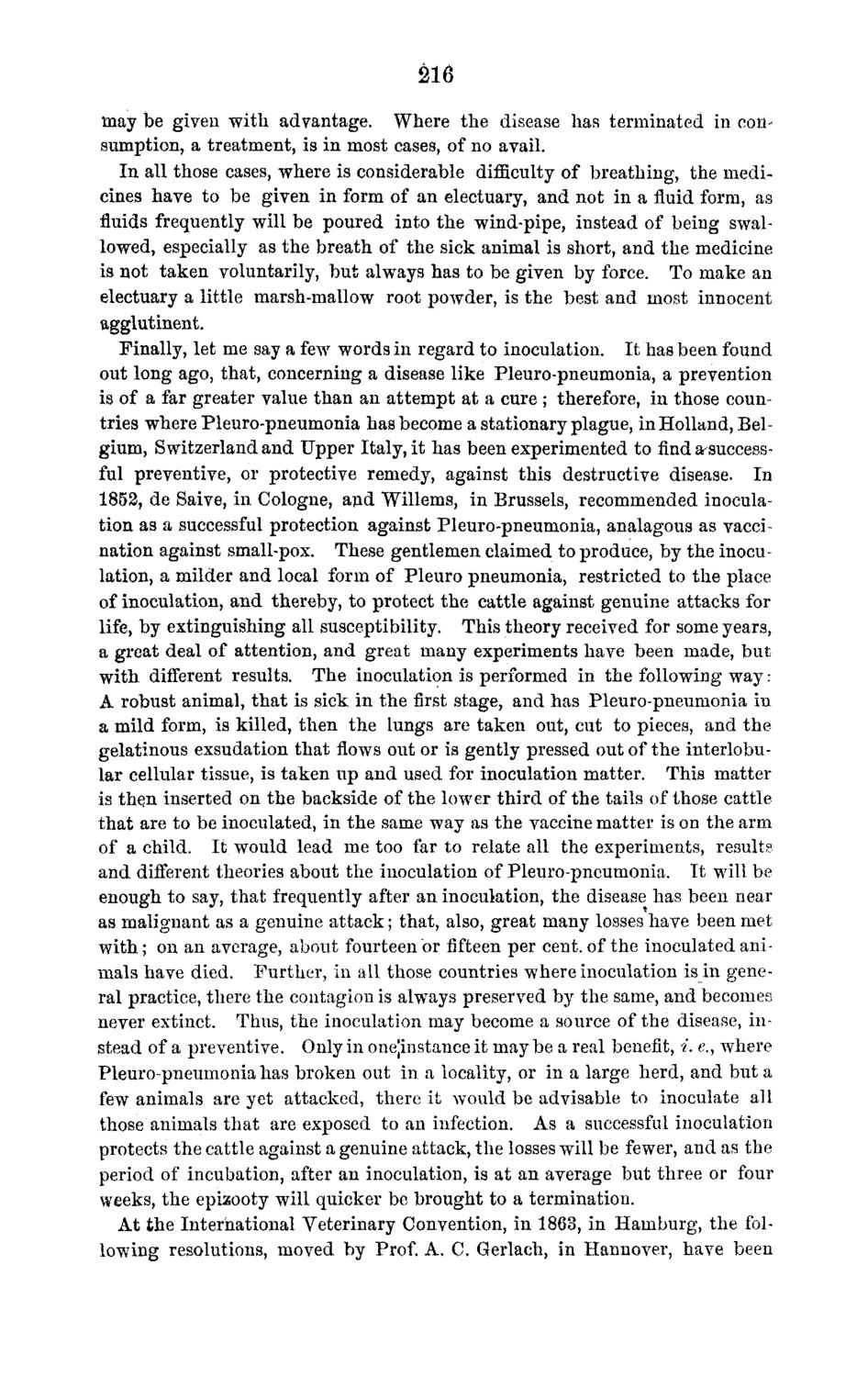| |
| |
Caption: Board of Trustees Minutes - 1870
This is a reduced-resolution page image for fast online browsing.

EXTRACTED TEXT FROM PAGE:
216 may be given with advantage. Where the disease has terminated in con-< sumption, a treatment, is in most cases, of no avail. In all those cases, where is considerable difficulty of breathing, the medicines have to be given in form of an electuary, and not in a fluid form, as fluids frequently will be poured into the wind-pipe, instead of being swallowed, especially as the breath of the sick animal is short, and the medicine is not taken voluntarily, but always has to be given by force. To make an electuary a little marsh-mallow root powder, is the best and most innocent agglutinent. Finally, let me say a few words in regard to inoculation. It has been found out long ago, that, concerning a disease like Pleuro-pneumonia, a prevention is of a far greater value than an attempt at a cure ; therefore, in those countries where Pleuro-pneumonia has become a stationary plague, in Holland, Belgium, Switzerland and Upper Italy, it has been experimented to find a-successful preventive, or protective remedy, against this destructive disease. In 1852, de Saive, in Cologne, and Willems, in Brussels, recommended inoculation as a successful protection against Pleuro-pneumonia, analagous as vaccination against small-pox. These gentlemen claimed to produce, by the inoculation, a milder and local form of Pleuro pneumonia, restricted to the place of inoculation, and thereby, to protect the cattle against genuine attacks for life, by extinguishing all susceptibility. This theory received for some years, a great deal of attention, and great many experiments have been made, but with different results. The inoculation is performed in the following way: A robust animal, that is sick in the first stage, and has Pleuro-pneumonia in a mild form, is killed, then the lungs are taken out, cut to pieces, and the gelatinous exsudation that flows out or is gently pressed out of the interlobular cellular tissue, is taken up and used for inoculation matter. This matter is the.n inserted on the backside of the lower third of the tails of those cattle that are to be inoculated, in the same way as the vaccine matter is on the arm of a child. It would lead me too far to relate all the experiments, results and different theories about the inoculation of Pleuro-pneumonia. It will be enough to say, that frequently after an inoculation, the disease has been near as malignant as a genuine attack; that, also, great many losses have been met with; on an average, about fourteen or fifteen per cent, of the inoculated animals have died. Further, in all those countries where inoculation is in general practice, there the contagion is always preserved by the same, and becomes never extinct. Thus, the inoculation may become a source of the disease, instead of a preventive. Only in onejinstance it may be a real benefit, i. e.y where Pleuro-pneumonia has broken out in a locality, or in a large herd, and but a few animals are yet attacked, there it would be advisable to inoculate all those animals that are exposed to an infection. As a successful inoculation protects the cattle against a genuine attack, the losses will be fewer, and as the period of incubation, after an inoculation, is at an average but three or four weeks, the epizooty will quicker be brought to a termination. At the International Veterinary Convention, in 1863, in Hamburg, the following resolutions, moved by Prof. A. C. Gerlach, in Hannover, have been
| |